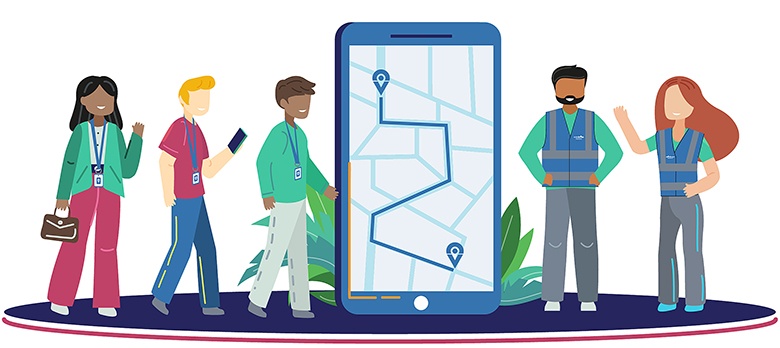
Many districts across the country are using alternative transportation options, but there are still quite a few that are leery of the risk it could mean for them.
There are things that districts can do to help mitigate the risks associated with transporting students, specifically when it comes to small-capacity vehicles. Whether the district is providing transportation, or it’s being contracted with a compliant provider, there are industry standards that should be met to help mitigate risks to the district.
• Insurance: While insurance minimums for small-capacity vehicles are smaller than those of a bus, districts should make sure all state requirements are met for personal auto-liability insurance minimums. The district should look for sufficient commercial auto policies for both the provider and/or any subcontractor that provides transportation in small capacity vehicles. The district can also request to be added as additionally insured on the provider’s commercial auto policy.
• Proactive Drug Testing: A zero tolerance drug and alcohol policy, that only requires reporting to either the provider or the authorities, is insufficient when transporting students. Zero tolerance policies should be coupled with drivers’ enrollment in a drug and alcohol consortium that requires pre-employment, post-accident, reasonable suspicion, and random drug screening.
• Driver Background Checks: National, state, and county background checks should be conducted for all drivers prior to them transporting students.
• Driver Sex Offender Registration Check: Before transporting students, all drivers should have to pass a sex offender registration check.
• Proper State Regulations: Not all states have existing regulations surrounding alternative student transportation. Check the regulations in your state and begin to advocate for the creation or modernization of regulations that will help keep your students safe while allowing for flexibility in routing and transportation efficiency.
Technology also plays a part in helping to reduce risks associated with transportation. Different types of platforms available to parents or district staff can help ease tensions and provide information that can’t be shared in any other way.
• Parent App: Providing parents with information about their child’s driver, the vehicle they’ll be riding in, and GPS tracking information not only helps mitigate risk, it also helps eliminate phone calls and parent concerns. It can enhance trust and peace of mind for all parties involved.
• District Portal: District staff should be able to monitor the location and arrival time of students. This can enable timely feedback and problem-solving opportunities. Including valuable reports can also help districts apply for funding reimbursement, track efficiency, track budgets, and watch for attendance patterns.
• Routing Software: Not all routing software can create routes in small-capacity vehicles. Be sure your district or provider is using software that is up-to-date and able to create smaller routes.
• Cameras: Cameras are a simple piece of technology that can help keep both drivers and students accountable for their behavior while in the vehicles.
While technology plays a very important role in mitigating risk by allowing districts to track students, ensure compliance with provider and state driver standards, and look at reports to keep everyone accountable, it cannot replace the team of individuals helping to make every ride to and from school the safest possible. Dedicated transportation staff at both the school district and the contracted provider are a critical piece that cannot be overlooked.
• Regular Check-Ins: Scheduling regular check-ins with your transportation provider allows for open lines of communication that can help address things like budget planning, specific student needs, and potential opportunities for optimization.
• Continuous Program Monitoring and Evaluation: Transportation teams that take the time to monitor and evaluate their alternative programs (including the service providers and drivers they work with) on a regular basis find ways to improve their programs and offer even better services to students and families. It also allows for them to find attendance patterns and possible opportunities for better communication with families and district staff.
• Timely Feedback and Recognition: While timely feedback can depend on the situation, when the entire team – internal and external – is consistently and openly communicating, issues and complaints are handled right away creating happier parents and safer students.
Comprehensively, risk mitigation in alternative student transportation starts with ensuring compliance to state requirements and industry standards, includes technology that informs and tracks, and reaches through transportation teams and the way they collaborate. Districts can take proactive measures to help mitigate risks within their transportation programs by being transparent, fostering open communication, and addressing challenges promptly. By embracing a holistic strategy that combines both technological solutions and human oversight, districts can create a safer and more efficient environment for students, ensuring their well-being on every journey to and from school.
Morgan Judge is director of compliance, regulation, and policy for EverDriven. Learn more at www.everdriven.com/safety.


